|
I was in Botswana the past two weeks and decided to have some fun with a super-wideangle lens, the Nikon 12-24, and some low angle elephant shots. Here are a few initial results.
5 Comments
After 25 years as a wildlife photographer, and having always wished to see and photograph a wild elephant birth, my dream finally came true whilst on a safari in Botswana with Stoney & Jan Edwards and their son Tom last December. The poignant moment was made so much more exciting by the fact that we had great light for photography, the elephant chose to drop her baby right in front of us in open country, and the herd interactions and excitement were so moving. It started after we'd had a great morning at Mombo Camp, watching lions, buffalo, leopard and then rhino - four of the Big Five - and then we found a herd of elephants feeding on the floodplains. Big Five in one game drive - amazing. After watching the herd for a while we were about to move off when I noticed one cow acting a bit strangely. I asked our driver to stop and wait a while and quickly discerned she was about to go into labour. 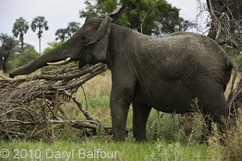 The cow first lay down then stood up again, moving quite awkwardly. I noticed a bulge on her flanks, quite high up, but then noticed her rear was swollen. I was almost too scared to say anything, but murmured to my guests - I think she's going to have a baby! At this stage most of the herd was feeding unconcernedly nearby, though one or two younger cow had moved closer. They may have been her daughters. The cow then rumbled a bit, and let out a brief trumpet. The next thing she had turned her back towards us and I could see the beginnings of the amniotic sac protruding from her birth canal. How co-operative and convenient of her to make sure we could see everything! The actual delivery was very fast - a few seconds and the calf was lying kicking to free itself from the sac on the ground. The mother initially moved away, rumbling excitedly...and the rest of the herd responded immediately, rumbling, trumpeting and rushing to the scene. 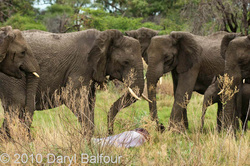 That was when proceedings really became fascinating. I knew of course that elephants are sentient beings and have a great understanding of life and death, much like we humans do. But the way the herd gathered around and formed a protective screen, then started "digging" at the ground with their forefeet to create what I termed a "birthing pit" or perhaps a soft cradle-like sandpit where the calf would find it easier to stand for the first time, and have a soft landing every time it stumbled and fell. Whatever, there was a seemingly conscious decision by all of them to create this soft sand-pit. Well, we all know that the Maasai Mara in Kenya is something special during the wildebeest migration each year during August - October, but we recently ran a great Big Cats safari in early March, and the place was really alive with these usually elusive animals. How about 8 different leopards in a week? What about a great cheetah chase and kill? How about 27 lions before breakfast? Yep, we had them all. The safari was organised with well-known UK wildlife artist Pip McGarry and his wife, along with 10 of their friends and guests. They were in Africa to photograph scenes to paint once back home and everyone must have got a year's worth of work at least. Look out for Pip's soon-to-be-painted hyaena and vultures canvas! In fact so successful was this trip - and in fact game viewing was perhaps better than during the migration because we were not under pressure to find the river crossings each day - that Pip has already planned another for next year March, and Wildphotos Safaris will also offer a special Big Cats departure. It is bound to be a huge success, so make your enquiry soon. I will post an album in the Photos pages once I'm through editing! 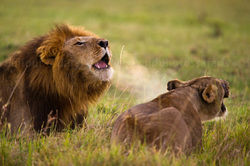 Lions roaring at sunrise, mist on their breath. 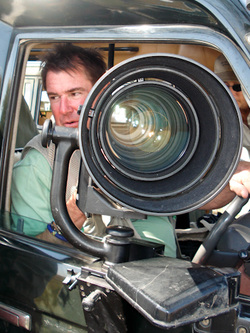 THE CAMERAS & PHOTOGRAPHIC EQUIPMENT DARYL & SHARNA USE We have used Nikon® cameras and lenses exclusively since 1990. This decision was made based upon our need to embrace the autofocus technology that was becoming increasingly prevalent at that time. Nikon had made the decision to stick with the same bayonet lens they have used forever, thus allowing photographers who already owned Nikon lenses to use the same lenses on the new cameras, albeit without autofocus (AF). For us this was a major incentive, as it allowed us to take advantage of the large number of second-hand Nikon lenses available on the “used” market as photographers upgraded to the newer AF models, or changed to other brands. Nikon has been a major camera brand, and one used & relied upon by professionals the world over, for decades, with the result that there are always good, quality, pro lenses and bodies on the second hand market. Our decision to “go with Nikon” was a turning point for us in our photographic careers, and one we have never regretted. We sincerely believe that Nikon as a brand offers photographers the utmost in durability and reliability under harsh conditions – the kind of conditions wildlife photographers must work in to be successful. We work hard, under trying conditions of dust, heat and inhospitable terrain, for many months of each year. We have never molly-coddled our vehicles, our equipment, or ourselves. Our Nikons have never let us down. In December 1992, when I was trampled by the giant elephant Tshokwane and both my Nikon 8008s cameras were trashed underfoot a 6-ton tusker, the film was retrieved unscathed from both bodies. Despite the destructive attentions of an angry elephant, resulting in both cameras being destroyed beyond repair, neither camera back sprung open nor let in any light. The film from both bodies was unmarred by scratches or any other damage. To us as photographers, for whom the image is the ultimate reward, this was the ultimate accolade for the durability of our Nikon cameras. Today we use an array of Nikon digital cameras including the D3s, D700 and new D7000, and some of the latest lenses. But our battery of cameras still includes some of the venerable old Nikon classics – the F2 and F3, a totally manual FM2, and the more modern AF film bodies, the F4 and F5. Although we don’t shoot film much anymore – our photo agencies and most publishers insist on digital submissions – we still maintain a freezer full of Fuji® Velvia & Provia emulsions for those special occasions. When we set off into the field on a wildlife photographing expedition our camera bags contain a selection of Nikon digital bodies, lenses and electronic flash units, along with an array of ancillary accessories such as Gitzo® tripods, Really Right Stuff® and Wimberley® heads, a laptop computer and LaCie® and Epson® hard drives for backups, an array of CF cards by SanDisk® and Lexar® in 4GB, 8GB, 16GB and 32GB capacities and a case full of lesser bits and pieces. We also never travel without beanbags, the most versatile camera/lens support device ever made! We make our own in heavy duty denim with Velcro® closures and can thus fill them with inexpensive beans, rice or even sand or gravel at our destination when travelling abroad. We have an extensive selection of lenses for all occasions, but the most important lenses in our arsenal are all zooms and we use, extensively, the Nikon 200-400mm f4 AF-S VR, 70-200mm f2,8 AF-S VR II, 24-70mm f2,8 AF-S and 14-24mm f2,8 AF-S, as well as the recently added AF-S VR 28-300mm, a very handy lens. We also make use of the exceptional Nikon 600mm f4 AF-S VR-II, but this is an awkward and bulky piece of equipment and difficult to use under general conditions. |
Daryl & Sharna BalfourDaryl & Sharna Balfour are among the most highly acclaimed African wildlife photographers and safari tour operators, based in Africa for most of the year, but also offering exclusive safaris too both the Arctic & Antarctic on request & by arrangement. Archives
August 2015
Categories
All
|
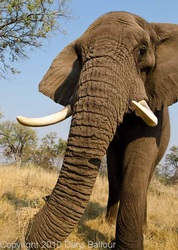





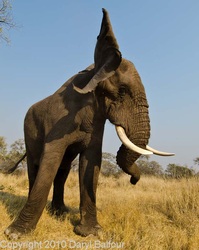
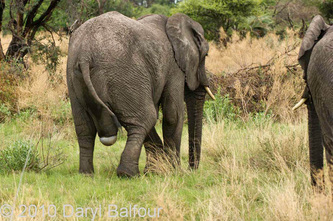




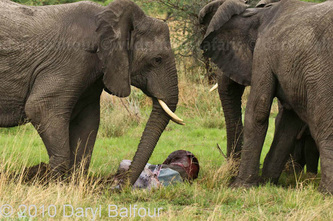
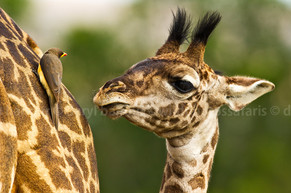
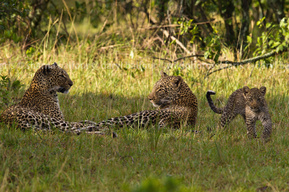
 RSS Feed
RSS Feed
